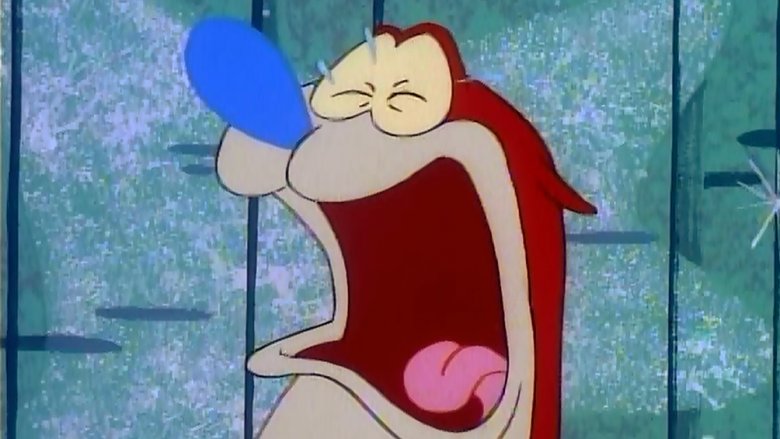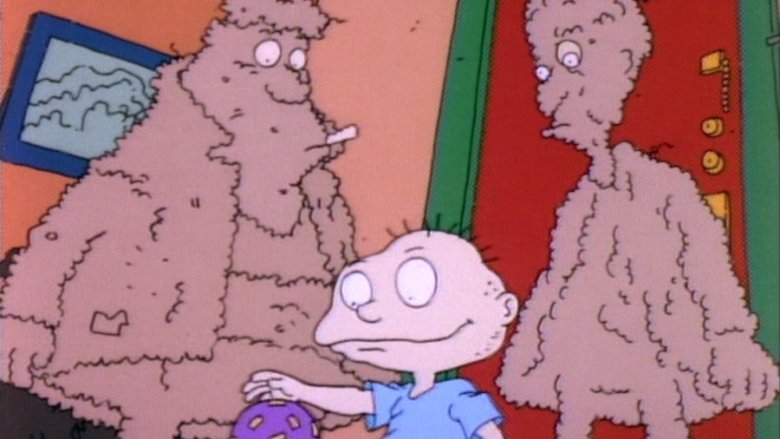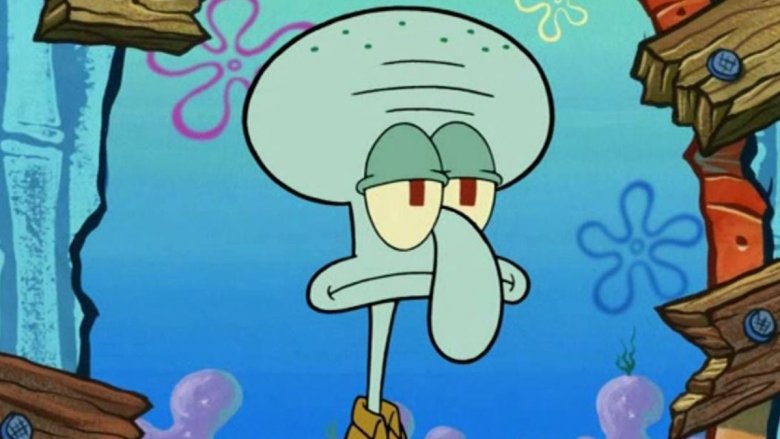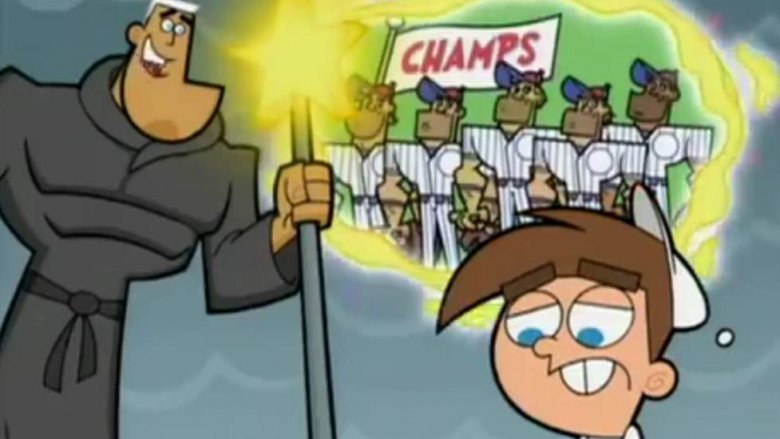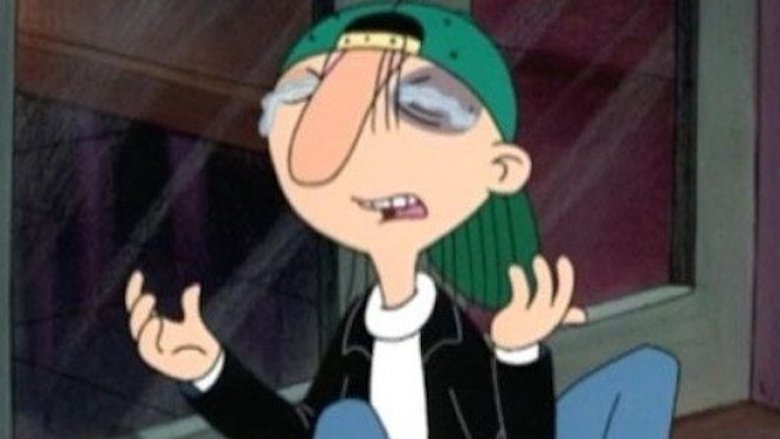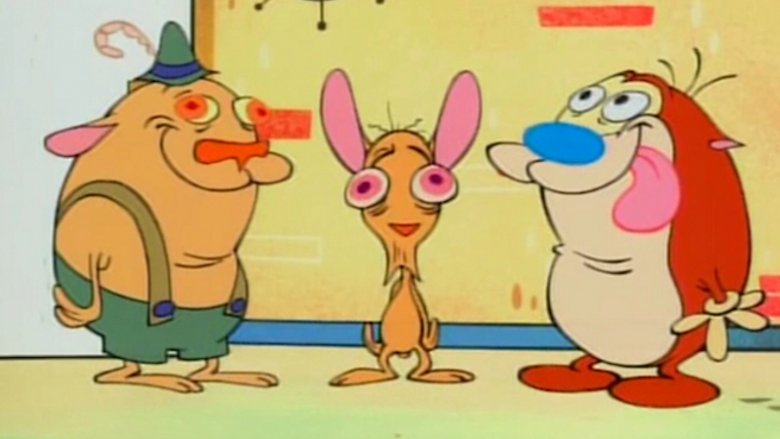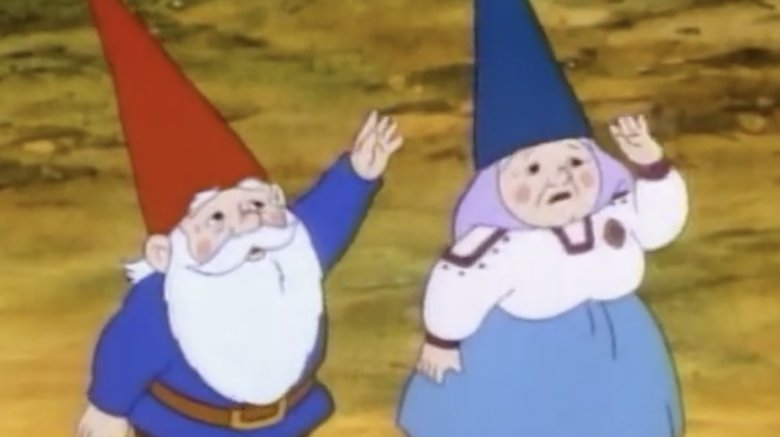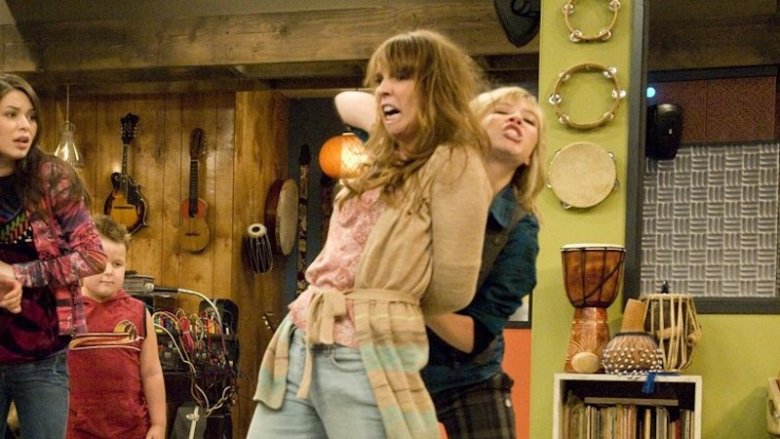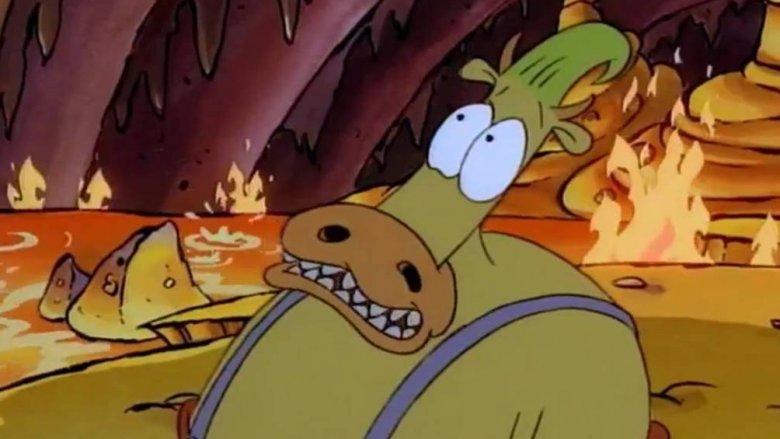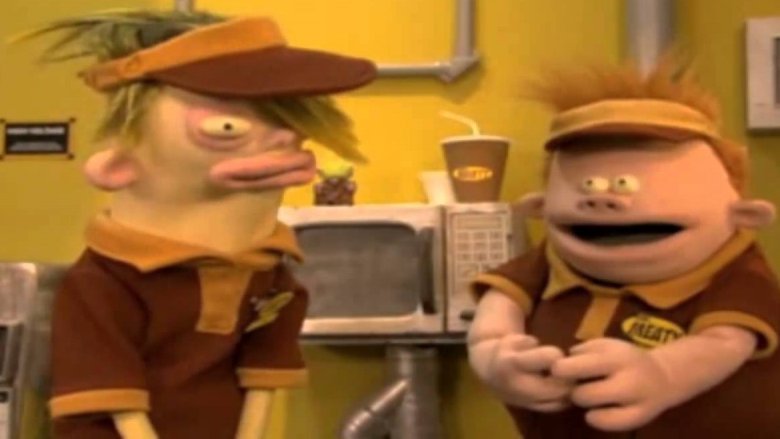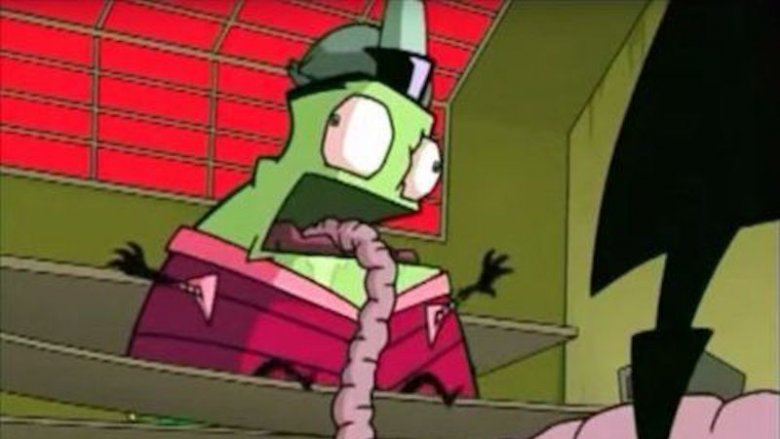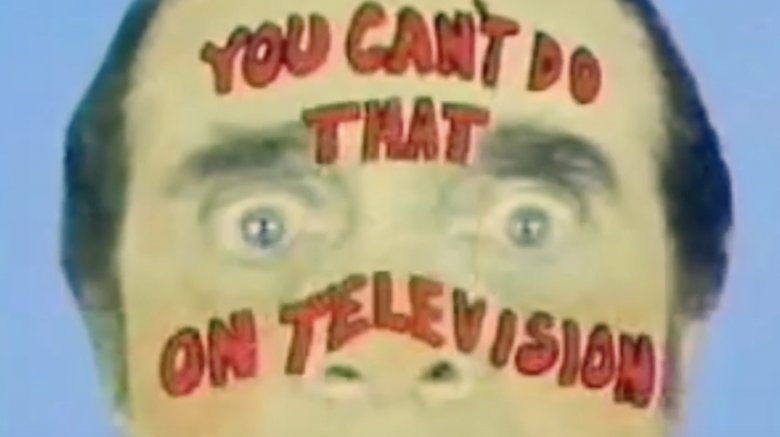Dark Moments From Nickelodeon Shows We All Forgot About
The "first network for kids" is more than 40 years old. Following its launch in the late 1970s, Nickelodeon became a cultural juggernaut, providing kid-friendly sitcoms, cartoons, variety shows, and movies to kids of all ages, from toddlers to school-age kids to tweens ... and those parents who like their programming more than a little bit bonkers. Nickelodeon has given the world so much classic entertainment. Without the orange blimp (and green slime) loving network, we wouldn't have SpongeBob SquarePants, Rugrats, iCarly, Doug, or All That. Children have embraced one Nick show after another because Nick knows what kids like — wildly imaginative and legitimately funny stuff that doesn't patronize them.
Sometimes, show creators, in striving to be original, creative, and real, took their series to some strange and even dark places. Here are some times when Nickelodeon shows turned downright shocking, so much so that we all collectively decided to pretend they never even happened.
One of the Rugrats got kidnapped
One of Nickelodeon's first original cartoons upon its 1991 debut, Rugrats was truly original and could only have worked as a cartoon. It depicted life from the point of view of babies and toddlers — surreal, brightly colored, full of wonder, and a little difficult to understand. A lot of the show's humor derived from Tommy Pickles, Chuckie Finster, and the rest confidently mispronouncing words and getting the basic concept of everyday life activities completely wrong. But come on, they're babies — they don't know anything about anything. Rugrats was almost always a gentle and comforting show, except for the Season 1 episode "Ruthless Tommy." Grandpa Lou is supposed to be watching Tommy, but falls asleep, leaving a curious Tommy to crawl out of his playpen and out the front door, which was inadvertently left ajar. Tommy goes outside to play with a ball, only for two guys to swing by and swoop him up.
Their reasoning for kidnapping a baby on this children's show is comically misguided: They got the address wrong and meant to kidnap a different baby, the son of a rich guy. While they throw a ransom note attached to a brick through the Pickles' window, Tommy ends up escaping by crying so much that he annoys the kidnappers enough to drive him home. Perhaps this Rugrats episode was the seed that got a generation hooked on true crime-based entertainment.
Squidward isn't doing well
SpongeBob SquarePants mines humor from its hugely different characters. SpongeBob is silly, childish, and unrelentingly happy, while his neighbor and Krusty Krab coworker Squidward is reserved, aloof, and sullen. In the 2012 episode "Are You Happy Now?" Squidward's malaise turns into full-on depression after he realizes he has no happy memories. SpongeBob takes it upon himself to create some for his pal, but his efforts fail, prompting Squidward to lock himself away in his house for two weeks. SpongeBob peeks through the mail slot to see a pile of mail and an unusually filthy house. Squidward, shuffling around the house in a bathrobe, refuses help. "At least we know he's alive," SpongeBob says in the first of two of the episode's suicide jokes. The other occurs when Squidward says "I just can't get happy" and sticks his head in his oven ... but it's a ruse, as he's merely pulling out a pan of burnt brownies. SpongeBob takes one last stab at treating his friend's depression: He throws Squidward a party, but since nobody comes, he makes 100 papier-mache statues of himself. Squidward works himself into a rage and destroys every last of them, finally generating a "happy memory."
A fairly odd "OddParents"
Writing for television is hard. After a few seasons on the air, it's tough to come up with new ideas, which is why so many TV series wind up doing a riff on It's a Wonderful Life. In that 1946 movie, a schmo named George Bailey attempts suicide, only to be rescued by an angel who shows him how the world would be worse off had he never been born. Dozens of shows have made their own version, from ALF to Night Court to The O.C. But it took the anarchic Nickelodeon cartoon Fairly OddParents to truly subvert the idea.
Every episode, Timmy Turner asks his bumbling fairy godparents Cosmo and Wanda to grant him a wish, and in "It's a Wishful Life," Timmy, bitter over a lack of recognition for doing good deeds, wishes to have never been born. Fairy commander Jorgen Von Strangle then arrives to show Timmy what life would be like for the figures in his life had he never come around ... and they're better. Cosmo and Wanda serve Timmy's friend Chester, who uses his magic for acts of kindness and charity; Timmy's other friend A.J. grows up and graduates college, having not been held back by Timmy's bad influence; his bully is a nice and compassionate guy; and his parents instead had a daughter and are rich. This extremely depressing message is ultimately undone when the wish's effects are reversed, but still, pretty existential stuff for a cartoon.
The Hey Arnold! episode about the crushing shame of poverty
There's a fine history of urban blight in children's television. Probably the most popular and famous kids' show ever, Sesame Street, takes place in a grimy, rundown Manhattan neighborhood where one of the characters literally lives in a trash can. Sesame Street doesn't seem to be located too far from the urban jungle where Arnold Shortman of Hey Arnold! resides in a boarding house with his grandparents. Sure, he lives in cramped quarters among strangers and his parents are dead, but his room is full of high-tech toys, which is a paradise compared to what life is like for his friend Sid. He's a tough-looking guy who wears a leather jacket and a backward baseball cap, but that's apparently just armor to keep up his defenses. In the episode "Arnold's Room," Sid teams up with a rich kid named Lorenzo for a school project, and when Lorenzo suggests they meet at Sid's house to work, Sid panics. His family doesn't have much money, and his room is small and ramshackle. So he gets Arnold to let him pretend that his happy, toy-filled room is his, so as to impress Lorenzo and not embarrass himself. Lorenzo ultimately discovers the lie but forgives Sid, probably because the situation is just so upsetting.
A truly twisted Ren and Stimpy moment (which is really saying something)
The Ren & Stimpy Show was perpetually gross and weird. A show that depicts a rage-aholic chihuahua named Ren ripping out the nerve endings in his mouth for the "Nerve Ending Fairy" after his teeth rot away probably had no business being on a network for kids. One of its darkest episodes was "Sven Hoek." The plot: Ren, tired of Stimpy and his idiotic behavior, anticipates a visit from his long-lost Scandinavian cousin, Sven. But when he arrives, Sven hits it off with Stimpy instead, and they do things like hang out in a litter box and inflate rubber gloves on their heads.
But when Ren comes home from work to find the house wrecked — Stimpy and Sven got bubble gum all over Ren's opera records and covered the living room in cat litter — Ren comes unglued and graphically details the punishment he plans to inflict on the two. (It includes ripping off their lips, gouging out their eyes, and tearing their arms out of their sockets.) But before he can commit these acts of extreme domestic violence, Ren cruelly urinates on a board game Stimpy and Sven had been playing. Unfortunately, that game is "Don't Whiz on the Electric Fence." As Ren did just that, the house blows up, and all three characters die and wind up in Hell, where they meet Satan.
Happy birthday, David the Gnome (now die)
While Ren & Stimpy and Clarissa Explains It All dominated the Nickelodeon schedule in the late afternoon and early evening, mornings were the domain of Nick Jr., a programming block for toddlers and preschoolers. The World of David the Gnome was an integral element, an animated series based on the classic children's book The Secret of Gnomes by Will Huygen and Rien Poortvilet. This quiet, gentle, fantastical show concerned a bearded gnome named David (voiced by Happy Days' Tom Bosley) roaming around the forest with other gnomes, staying away from trolls, and hanging out with a fox named Swift.
Already steeped in gnome mythology, The World of David the Gnome doubled down in its final episode, to potentially traumatizing effect. Gnome lore says that gnomes live to the age of 400 and then die, and for the entire run of the series, David, along with his wife Lisa and another gnome named Casper, were about 399. The series finale finds David, Lisa, and Casper accepting their deaths, and they march to the Mountains of Beyond. Little kids at home then watched — as did David's heartbroken best friend, Swift — as the gnomes died the way gnomes do, which is to magically transform into trees. Happy birthday, David!
iCarly had a hilarious episode about a stalker
The 2000s Nickelodeon sitcom iCarly is as much to blame as any reality TV star for the scores of young people out there who want to grow up and become internet famous viral stars. It's about a teenager named Carly (Miranda Cosgrove), who, along with her friends Sam (Jennette McCurdy) and Freddie (Nathan Kross), make a web series (also called iCarly) that becomes hugely popular. Along with the benefits of fame come the perils, however. In Season 3, a fan takes a turn into toxic territory, and stalks and kidnaps the trio.
The fan, Nora (Danielle Morrow), can't get anybody (even her parents) to attend her 16th birthday party, so the iCarly trio goes and shoots a special episode at Nora's house to try to drum up interest. The gambit works and the party is a success, but then Nora snaps, believing the iCarly cast are angels sent to her to turn her life around, and so she traps them in her basement. But she apparently doesn't totally think that because Nora also confiscates everyone's phones. Carly manages to get a coded message out and the three children get rescued from their captor's basement, while Nora gets sent to juvie. Now that's a very special episode.
A heck of an idea for a Rocco's Modern Life episode
Hey, kids love references to Dante's Inferno, the most famous part of The Divine Comedy, the 14th-century epic poem in which a mortal travels to Hell, right? That's not even nearly the most troubling thing in "To Heck and Back," a 1993 episode of Nickelodeon's bizarro cartoon Rocko's Modern Life. Rocko, a wallaby, and his best friend, a male cow named Heffer, dine at Chokey Chicken, where the gluttonous Heffer orders nearly $40 worth of food (which is a lot, especially in 1993). While devouring his mountain of food, Heffer chokes on a rib cage and dies. His soul ascends to Heaven, but then his angel wings turn into an anvil, and he crashes down in Hell, or rather Heck. You know, because this is a children's show and saying the word "Hell" would be inappropriate. It would seem that Heffer's commission of the deadly sin of gluttony was especially severe, as a highlight reel of his life points out. He's ultimately saved from eternal torment for eating too much when Rocko revives him. But as they head out to a movie, Heffer asks if they can stop for a bite at Beef Barge. Not only did Heffer learn nothing from his journey to Heck, but seeing as how he's a steer, he's also okay with cannibalism.
Mr. Meaty probably got a generation of kids off of fast food
Nickelodeon viewers in the 2000s never knew where Mr. Meaty lurked. Airing seemingly randomly as interstitial, time-filling segments, this series of three-minute shorts popped up on Nick between 2006 and 2009. This workplace sitcom centered on the day-to-day action at Mr. Meaty, a disgusting fast food restaurant in a mall food court operated by two grotesque puppets: nerdy Parker and too-cool-for-school Josh. In between trying to impress classmates (particularly girls) who stop by Mr. Meaty, Parker and Josh deal with unusual fast food problems.
In one episode, Parker eats 12 "Ms. Meaty" burgers, topped with Ms. Meaty sauce that's apparently so loaded with estrogen that it puts him on an excruciating physical transformation into a girl. In another, Parker and Josh burn off a friend's nose in an attempt to remove a zit, and when it falls into the Mr. Meaty deep-fryer, they replace it with a sausage. There's also the rival food court eatery Soy What, which attempts to sacrifice Parker in a cannibalistic cult ritual, and there's the time Parker eats raw beef and develops a tapeworm. As there's something at least mildly disturbing in almost every Mr. Meaty episode, it probably left an entire generation of kids reluctant to go out and get that first after-school job at a fast food place.
Invader Zim's lesson in organ harvesting
How Invader Zim ever landed on a children's network is a bit surprising. This cartoon series about an alien named Zim posing as a child and bent on world domination (although thwarted by his dumb robot GIR and a paranormal-obsessed little boy named Dib) is the creation of comic book writer and illustrator Jhonen Vasquez, who probably had to show Nick execs samples of his most famous print work, a series called Johnny the Homicidal Maniac.
Invader Zim wasn't quite as dark as Johnny, which concerns the adventures of a deranged and possibly possessed suburban serial killer, but it did come close on occasion. Take the "Dark Harvest" episode for example. One day, Dib scans Zim with an X-ray device, noticing that Zim's organs look nothing like human organs. That prompts Zim to take his passing-for-human up a notch: He decides to replace his alien internal organs with people ones and goes on a quiet rampage around his grade school, attacking teachers and students and stealing their organs (and replacing them with random objects, such as a hall pass and lights). Zim eventually harvests the organs of everyone in the school. In other words, his twisted scheme of organ thievery works, and he suffers no consequences or punishment.
You really can't do THAT on television
As one of cable TV's first offerings in the late '70s and early '80s, Nickelodeon cobbled together a lineup of kid-friendly cartoons and variety shows imported from the U.K. and Canada. One show from up north, You Can't Do That on Television, became one of the channel's earliest hits and signature shows, combining sketch comedy with the behind-the-scenes, on-the-set antics of the kid actors starring in the sketches. It was basically a combination of Saturday Night Live and 30 Rock, although the sketches were surprisingly dark for a kiddie show — one recurring bit featured a kid tied to a post trying to talk his way out of execution via firing squad. The suits at Nickelodeon had no problem with underage capital punishment, so they sure didn't mind joking about adoption.
You Can't Do That on Television episodes usually had a theme, and for a 1987 episode that theme was "Adoption," but it was really "let's make fun of adopted kids." In one sketch, for example, the behavior of a peeping Tom teenage boy is blamed on the fact that he was adopted. After it aired, Nickelodeon decided to pull it out the rotation. "We ourselves didn't understand what buttons were being pushed about an episode dealing with adoption. And that was our mistake," show co-creator Geoffrey Darby told Splitsider in 2012. "... And so that was a bad show. ... I think it only ever aired once."
